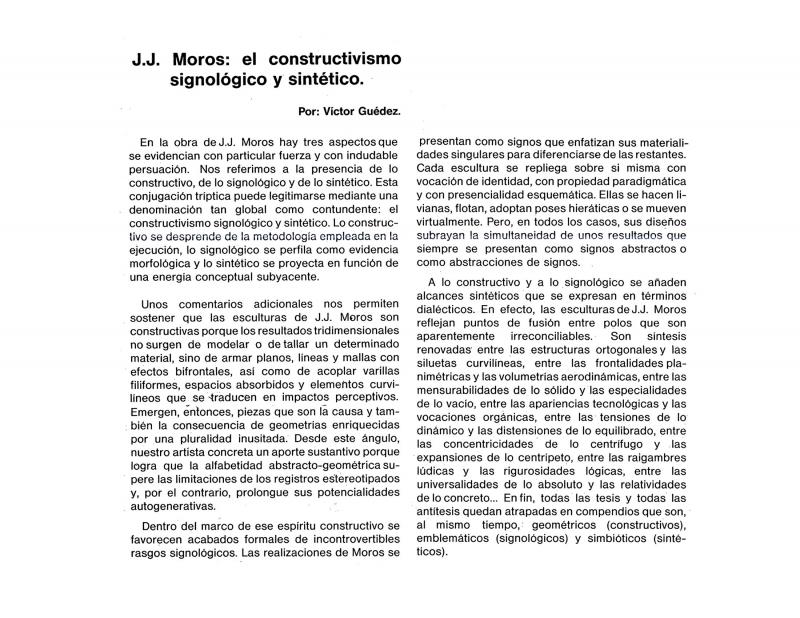The Spanish-born Venezuelan historian, teacher, and critic José María Salvador (b. 1946) interviews José Jesús Moros (b. 1950) on the occasion of Vectores y Tensores (Maracay: Museo de Arte Contemporáneo Mario Abreu, 1995), the exhibition of the latter’s sculptures. This exhibition shows that the Venezuelan sculptor’s forms, contents, and inspirations have changed substantially since his earlier work; he has turned away from orthodox constructivism to focus more on the volume (real and non-virtual) that was absent in his previous pieces. During the interview Salvador addresses this evolutionary change, noting that the sculptor now uses iron in the production of his sculptures. This interview is important because it includes an extensive classification of the visual attributes and aesthetic properties of Moros’ sculptures. The conversation touches on that evolutionary process, and the artist outlines his reasons for, and the visual-aesthetic consequences of, those changes. Like the preceding essay, also by Salvador (“Compacidad del volumen / Complicidad del espacio. Reflexiones sobre los Vectores y Tensores de J. J. Moros”), this interview is important because it splits Moros’ work into two clear periods.
To view another article about this artist, see by Víctor Guédez “J. J. Moros: el constructivismo signológico y sintético” [doc. no. 1162775].

